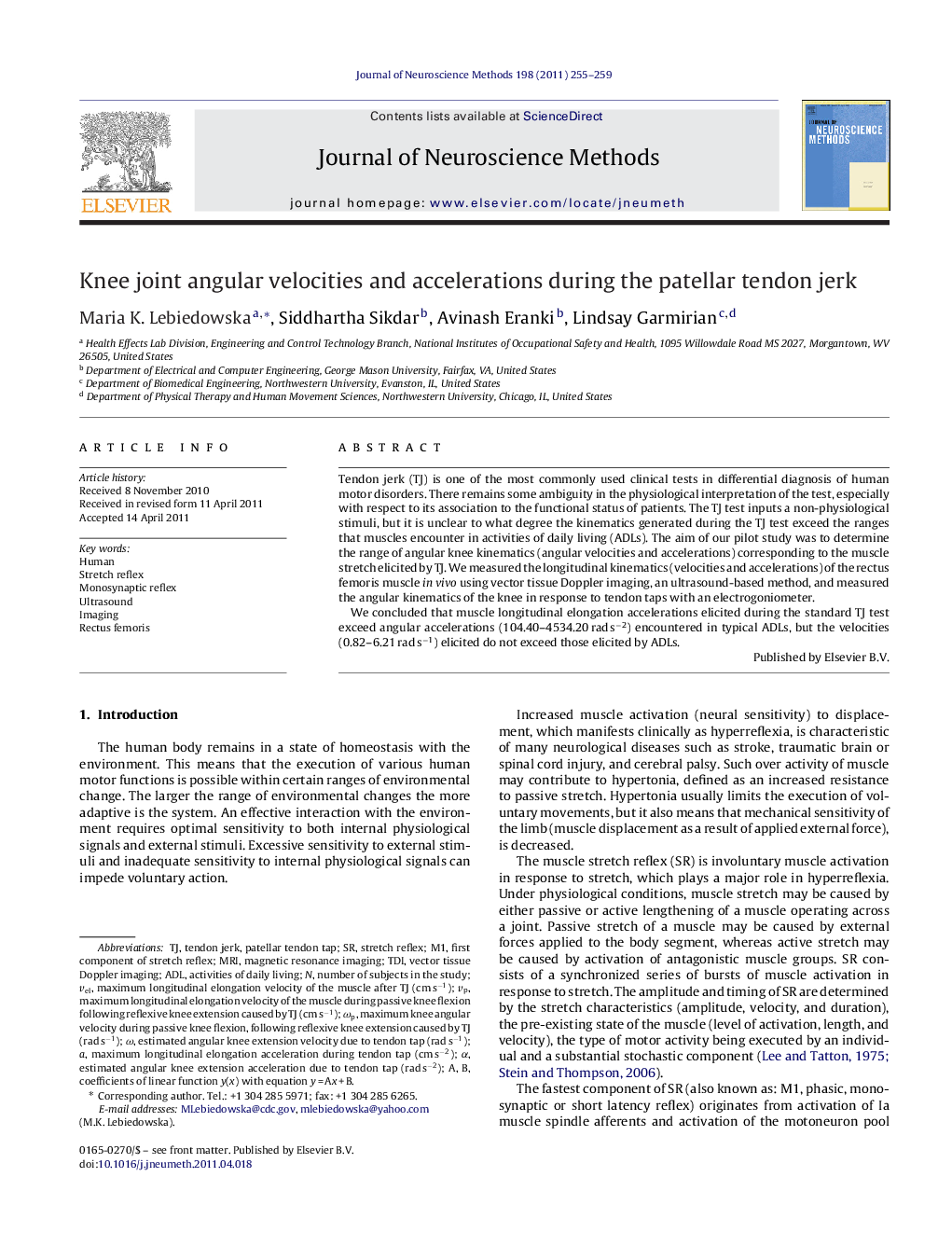| Article ID | Journal | Published Year | Pages | File Type |
|---|---|---|---|---|
| 4335449 | Journal of Neuroscience Methods | 2011 | 5 Pages |
Tendon jerk (TJ) is one of the most commonly used clinical tests in differential diagnosis of human motor disorders. There remains some ambiguity in the physiological interpretation of the test, especially with respect to its association to the functional status of patients. The TJ test inputs a non-physiological stimuli, but it is unclear to what degree the kinematics generated during the TJ test exceed the ranges that muscles encounter in activities of daily living (ADLs). The aim of our pilot study was to determine the range of angular knee kinematics (angular velocities and accelerations) corresponding to the muscle stretch elicited by TJ. We measured the longitudinal kinematics (velocities and accelerations) of the rectus femoris muscle in vivo using vector tissue Doppler imaging, an ultrasound-based method, and measured the angular kinematics of the knee in response to tendon taps with an electrogoniometer.We concluded that muscle longitudinal elongation accelerations elicited during the standard TJ test exceed angular accelerations (104.40–4534.20 rad s−2) encountered in typical ADLs, but the velocities (0.82–6.21 rad s−1) elicited do not exceed those elicited by ADLs.
► In this study, we used a noninvasive, ultrasound technique to measure the muscle kinematics during a standard neurological, tendon reflex test. ► We found that muscle accelerations but not velocities exceed the ranges encountered in ADLs. ► We provided experimental evidence to support the common belief that muscle kinematic ranges during TJ exceed the kinematic range of ADLs for accelerations but not velocities.
